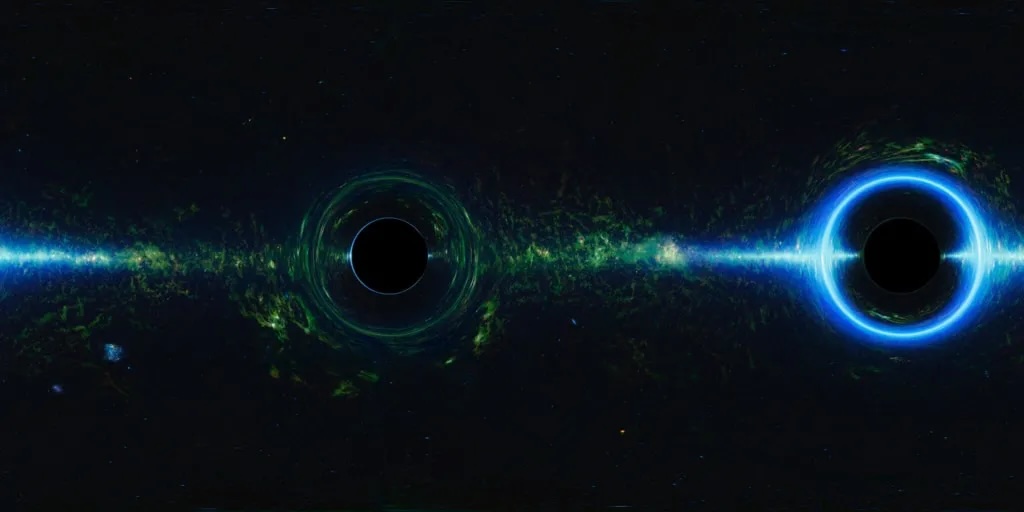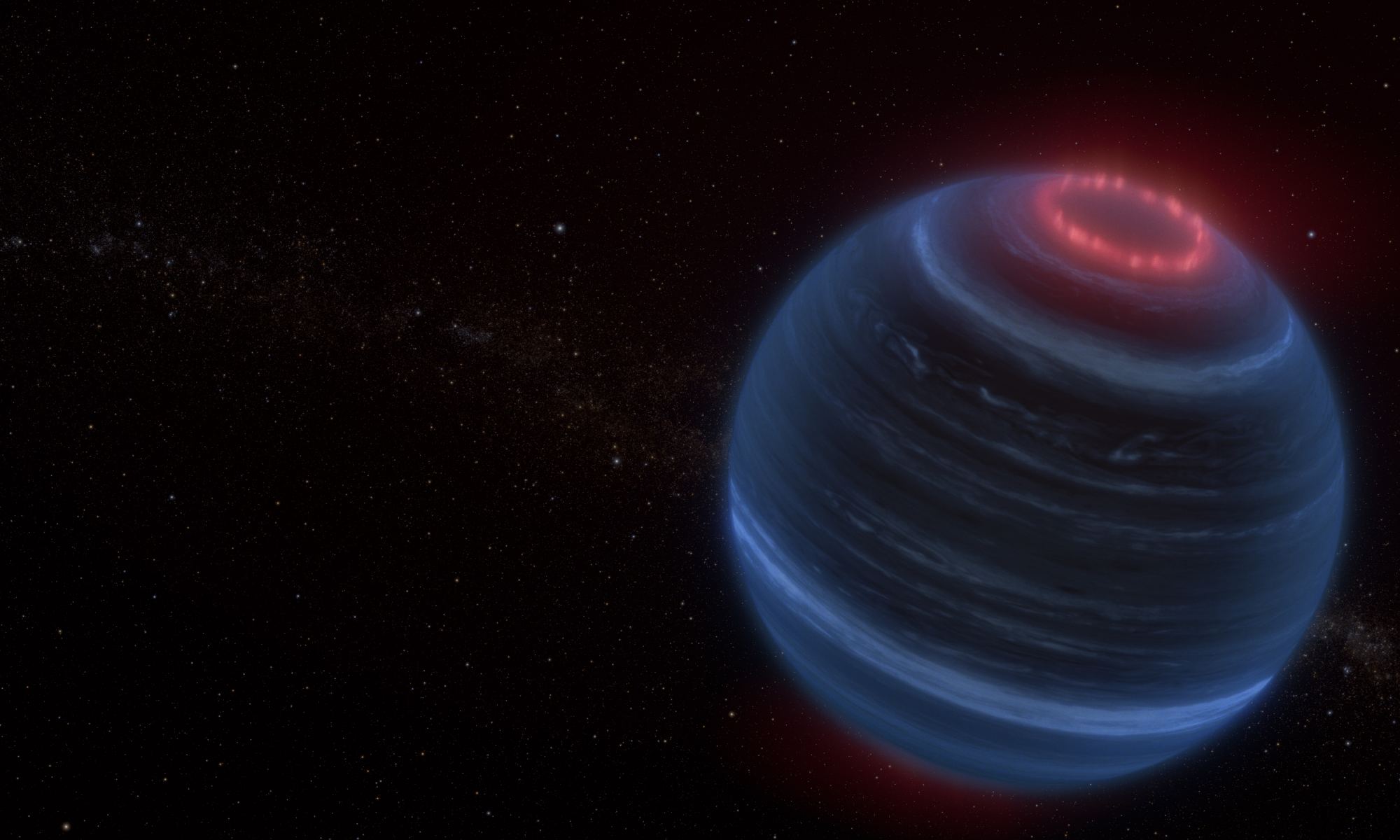The most likely way we will discover life on a distant exoplanet is by discovering a biosignature. This can be done by looking at the atmospheric spectra of a world to discover the spectral pattern of a molecule that can only be created through biological processes. While it sounds straightforward it isn’t. The presence of simple molecules such as water and oxygen don’t prove life exists on a planet. It’s true that Earth’s atmosphere is oxygen rich thanks to life, but geological activity can also produce large quantities of oxygen. And as a new study shows, some molecules we’ve long thought to be biological in origin may not be.
Continue reading “Biosignatures Can be Made in the Lab. No Life Needed.”Those Aren't Dyson Spheres, They're HotDOGs
If there really are advanced alien civilizations out there, you’d think they’d be easy to find. A truly powerful alien race would stride like gods among the cosmos, creating star-sized or galaxy-sized feats of engineering. So rather than analyzing exoplanet spectra or listening for faint radio messages, why not look for the remnants of celestial builds, something too large and unusual to occur naturally?
Continue reading “Those Aren't Dyson Spheres, They're HotDOGs”Researchers Mimic Extracting Energy From Black Holes in the Lab
When you get close to a black hole, things can get pretty intense. The tremendous gravity can squeeze gas to ionizing temperatures, and fierce magnetic fields can accelerate plasma into jets speeding at nearly the speed of light. That’s a lot of power, and wherever there is power someone will figure out how to harness it.
Continue reading “Researchers Mimic Extracting Energy From Black Holes in the Lab”Could Stars Hotter Than the Sun Still Support Life?

Although most potentially habitable worlds orbit red dwarf stars, we know larger and brighter stars can harbor life. One yellow dwarf star, for example is known to have a planet teaming with life, perhaps even intelligent life. But how large and bright can a star be and still have an inhabited world? That is the question addressed in a recent article in the Astrophysical Journal.
Continue reading “Could Stars Hotter Than the Sun Still Support Life?”Exoplanets Could be Hiding Their Atmospheres
Most of the exoplanets we’ve discovered orbit red dwarf stars. This isn’t because red dwarfs are somehow special, simply that they are common. About 75% of the stars in the Milky Way are red dwarfs, so you would expect red dwarf planets to be the most abundant. This also means that most habitable worlds are going to orbit these small, cool stars, and that has some significant consequences for our search for life.
Continue reading “Exoplanets Could be Hiding Their Atmospheres”SETI Scientists Scan TRAPPIST-1 for Technosignatures

If you are going to look for intelligent life beyond Earth, there are few better candidates than the TRAPPIST-1 star system. It isn’t a perfect choice. Red dwarf stars like TRAPPIST-1 are notorious for emitting flares and hard X-rays in their youth, but the system is just 40 light-years away and has seven Earth-sized worlds. Three of them are in the potentially habitable zone of the star. They are clustered closely enough to experience tidal forces and thus be geologically active. If intelligent life arises easily in the cosmos, then there’s a good chance it exists in the TRAPPIST-1 system.
Continue reading “SETI Scientists Scan TRAPPIST-1 for Technosignatures”Could We Find Primordial Black Holes in the Solar System?
Astronomers have observed three types of black holes in the Universe. Stellar-mass black holes formed from the collapse of a massive star, intermediate mass black holes found in some star clusters, and supermassive black holes that lurk in the centers of galaxies. But there is a fourth type that remains hypothetical an unobserved. Known as primordial black holes, they are thought to have formed from tiny fluctuations in the hot and dense early cosmos. Since they wouldn’t have formed from stars or mergers, they could have a much smaller mass. And with small masses, primordial black holes would be tiny. Their event horizons would be smaller than an apple, perhaps as small as a grain of sand. You can see why they would be hard to find.
Continue reading “Could We Find Primordial Black Holes in the Solar System?”Supermassive Black Holes Got Started From Massive Cosmic Seeds

Supermassive black holes are central to the dynamics and evolution of galaxies. They play a role in galactic formation, stellar production, and possibly even the clustering of dark matter. Almost every galaxy has a supermassive black hole, which can make up a small fraction of a galaxy’s mass in nearby galaxies. While we know a great deal about these gravitational monsters, one question that has lingered is just how supermassive black holes gained mass so quickly.
Continue reading “Supermassive Black Holes Got Started From Massive Cosmic Seeds”The Universe Could Be Filled With Ultralight Black Holes That Can't Die

It’s that time again! Time for another model that will finally solve the mystery of dark matter. Or not, but it’s worth a shot. Until we directly detect dark matter particles, or until some model conclusively removes dark matter from our astrophysical toolkit the best we can do is continue looking for solutions. This new work takes a look at that old theoretical chestnut, primordial black holes, but it has a few interesting twists.
Continue reading “The Universe Could Be Filled With Ultralight Black Holes That Can't Die”A Cold Brown Dwarf is Belching Methane Into Space
Brown dwarfs span the line between planets and stars. By definition, a star must be massive enough for hydrogen fusion to occur within its core. This puts the minimum mass of a star around 80 Jupiters. Planets, even large gas giants like Jupiter, only produce heat through gravitational collapse or radioactive decay, which is true for worlds up to about 13 Jovian masses. Above that, deuterium can undergo fusion. Brown dwarfs lay between these two extremes. The smallest brown dwarfs resemble gas planets with surface temperatures similar to Jupiter. The largest brown dwarfs have surface temperatures around 3,000 K and look essentially like stars.
Continue reading “A Cold Brown Dwarf is Belching Methane Into Space”





